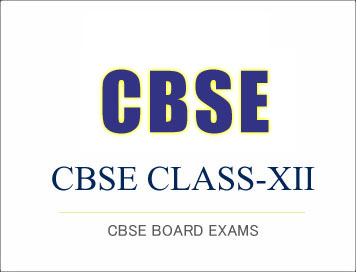(Download) CBSE: Class XII Electrical Machines Question Paper - 2018
Disclaimer: This website is NOT associated with CBSE, for official website of CBSE visit - www.cbse.gov.in

Question Papers For Board Examinations 2018
Class – XII
Subject – Electrical Machines
Subject : Electrical Machines
Class : XII
Year : 2018
General Instructions :
- Please check that this question paper contains 11 printed pages.
- Code number given on the right hand side of the question paper should be written on the title page of the answer-book by the candidate.
- Please check that this question paper contains 4 questions.
- Please write down the Serial Number of the question before attempting it.
- 15 minute time has been allotted to read this question paper. The question paper will be distributed at 10.15 a.m. From 10.15 a.m. to 10.30 a.m., the students will read the question paper only and will not write any answer on the answer-book during this period.
Attempt any eleven questions :
(a) Which winding in a transformer has more number of turns ?
(i) Primary winding
(ii) Secondary winding
(iii) High voltage winding
(iv) Low voltage winding
(b) Primary of a power transformer on no load will draw least current from
(i) a 220 V d.c. supply
(ii) a 220 V, 50 Hz, a.c. supply
(iii) a 220 V, 25 Hz, a.c. supply
(iv) Equally from the above three supplies
(c) Losses which do not occur in a transformer but do occur in rotating electric machines are
(i) hysteresis and eddy current losses
(ii) friction and windage losses
(iii) copper losses
(iv) magnetic losses
(d) A step-up transformer is required to supply
(i) 60 W, 230 V electric lamp
(ii) Electric bell
(iii) Neon sign
(iv) None of the above
(e) Speed control by Ward Leonard method gives uniform speed variation
(i) above normal speed only
(ii) below normal speed only
(iii) in one direction only
(iv) in both directions
(f) Iron losses in a d.c. machine take place in
(i) yoke only
(ii) armature core only
(iii) yoke and armature
(iv) None of the above
(g) Which d.c. motor has got the maximum self-retrieving property ?
(i) Shunt motor
(ii) Series motor
(iii) Differentially compounded motor
(iv) Cumulatively compounded motor
(h) The main function of starter in a 3-phase induction motor is
(i) to start the motor
(ii) to develop high starting torque
(iii) to limit the inrush of current at starting
(iv) to bring the motor quickly to full speed
(i) The star delta starter
(i) reduces starting current but increases starting torque
(ii) reduces starting current and starting torque also
(iii) increases starting current as well as starting torque also
(iv) increases starting current and reduces starting torque
(j) Torque developed by an induction motor is
(i) inversely proportional to voltage
(ii) directly proportional to voltage
(iii) directly proportional to the square of voltage
(iv) inversely proportional to the square of voltage
(k) Torque developed by a single-phase induction motor at starting is
(i) Uniform
(ii) Pulsating
(iii) None of the two
(iv) Nil
(l) Starting capacitor of a F.H.P. single-phase motor will have a capacitance of about
(i) 12 μF
(ii) 40 μF
(iii) 300 μF
(iv) 1000 μF
(m) Short-circuit is used in
(i) repulsion motor
(ii) repulsion start induction run motor
(iii) repulsion induction motor
(iv) None of the above
(n) The bit of a soldering iron is made of
(i) Aluminium
(ii) Manganin
(iii) Copper
(iv) None of the above
(o) The melting point of soft solder will be
(i) below 1000C
(ii) between 1900C and 2500C
(iii) 6000C
(iv) None of the above
Click Here To Download Full Paper
<< Go Back To Main Page
Courtesy: CBSE